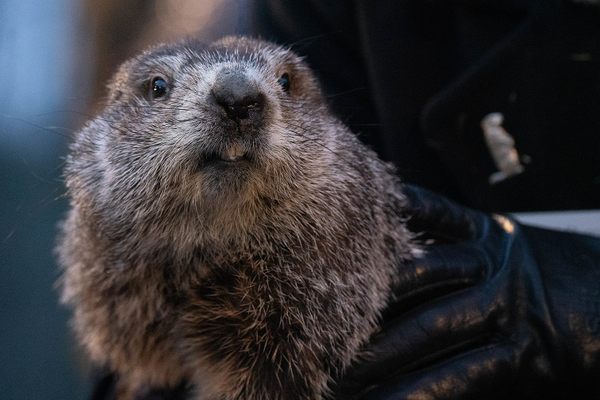A Primer on Both Groundhogs and Hedgehogs
Just in time for their moment in the sun (or not).
In the United States and Canada, February 2 is Groundhog Day, that odd mid-winter ode to a particular rodent and its shadow. In the United Kingdom, February 1 or 2 are sometimes called Hedgehog Day, a bit of old folklore about that creature’s weather predicting abilities that has enjoyed a renaissance in the internet era. (Outside of being small-ish mammals with “hog” in their names, they’re not closely related.) To celebrate these quaint and quirky traditions, enjoy an Atlas Obscura primer on the animals and their enduring appeal.
The Alternative Groundhogs Vying for Punxsutawney Phil’s Weather Forecasting Job
by Jennifer Byrne
Pennsylvania’s Punxsutawney Phil may be the most famous of the groundhog-meteorologists that make an appearance on February 2, but he’s far from alone. In that state alone his competition includes Octoraro Orphie, Mount Joy Minnie, Lawrenceville Lucy, Mt. Gretna Grady, Susquehanna Sherman, and Tinicum. And then there’s Big Al, a 90-plus-year-old, 1,000 pound alligator in Beaumont, Texas, whose winter weather forecast can be read—it is said—in his appetite for steak.

The Great British Hedgehog Census Is Prickly Business
by Jessica Leigh Hester
Naturally nocturnal and partial to quiet edges of the landscape, hedgehogs in the wild are hard to count. But scientists in England have gone to great lengths to catalog the declining population. Among their tricks: corrugated plastic tunnels in hedgehog territory, with something tasty (such as meat-flavored baby food) to tempt the creatures, and shallow dishes of paint. Their paint-coated paw prints leave distinctive tracks for the researchers.

When Groundhog Was on the Menu
by Diana Hubbell, Associate Editor, Places
In the late 19th and early 20th centuries, when the Groundhog Day tradition took root in the United States, the animal in question may have had better reasons than the cold and snow to dive back into his burrow: the very legitimate danger that someone might be planning to eat him. Groundhog dinners were once popular fundraisers among Pennsylvania Dutch communities, with offerings ranging from roast groundhog with bread stuffing to buttermilk-brined groundhog braised with vinegar and wild ramps.

Meet the Mettigel, Germany’s Hedgehog Sculpted From Meat
by Rachel Glassberg
Some people bake cakes for festive occasions; others put out chips and dip. But in Germany, it wouldn’t be a party without Mettigel—a “meat hedgehog,” formed out of uncooked, lightly seasoned ground pork, onion “spines” and olives, capers or peppercorns for eyes. Though it sounds like—and is—an Instagram fad, the history of food shaped like a hedgehog dates back to the Middle Ages.

London Wants Its Hedgehogs Back
by Jessica Leigh Hester
If you happen to spot a small hole in the bottom of a fence or brick wall in Barnes, a neighborhood in southwest London, there’s a good chance that you’ve stumbled upon a hedgehog crossing. There might even be a sign reading “Hedgehog Highway.” It is all part of an effort to bring the humble hedgehog back. In the 1950s, there were an estimated 30 million of them in England, Scotland, and Wales. There could be fewer than a million today.


































Follow us on Twitter to get the latest on the world's hidden wonders.
Like us on Facebook to get the latest on the world's hidden wonders.
Follow us on Twitter Like us on Facebook